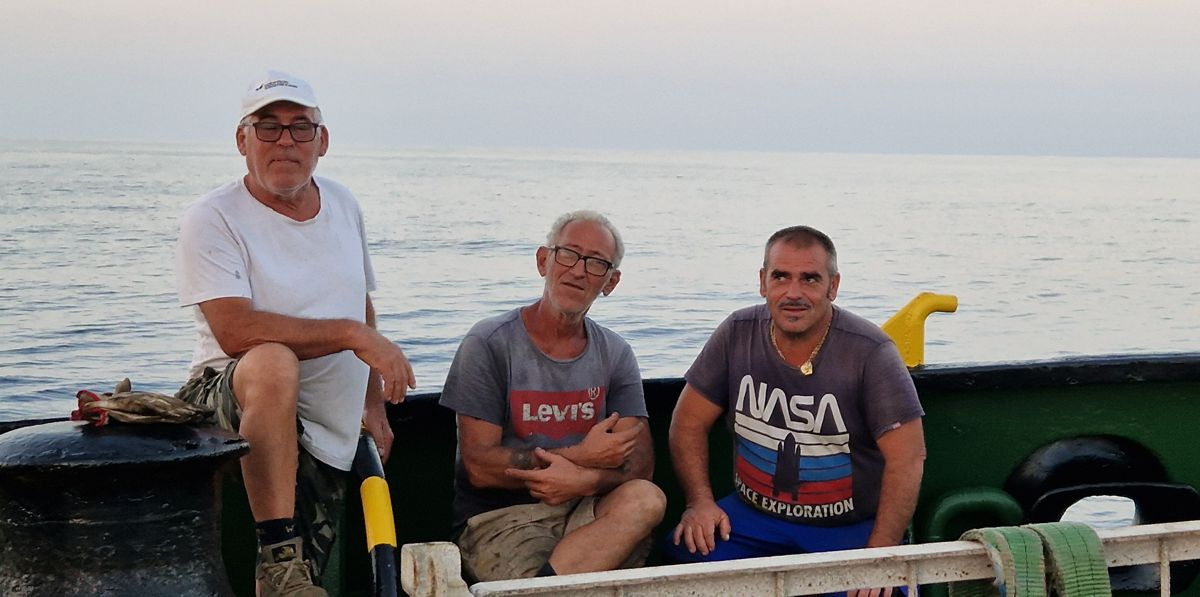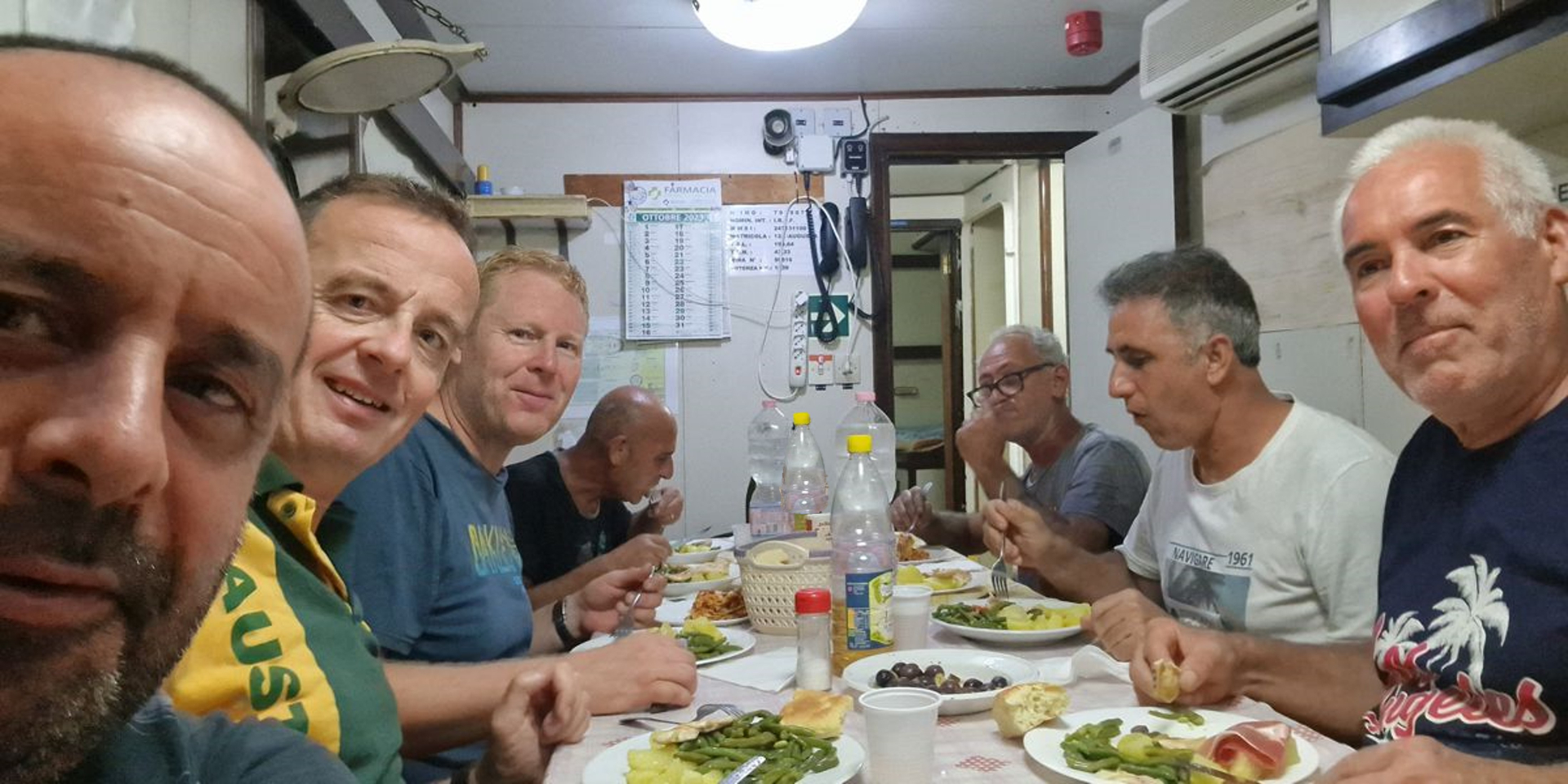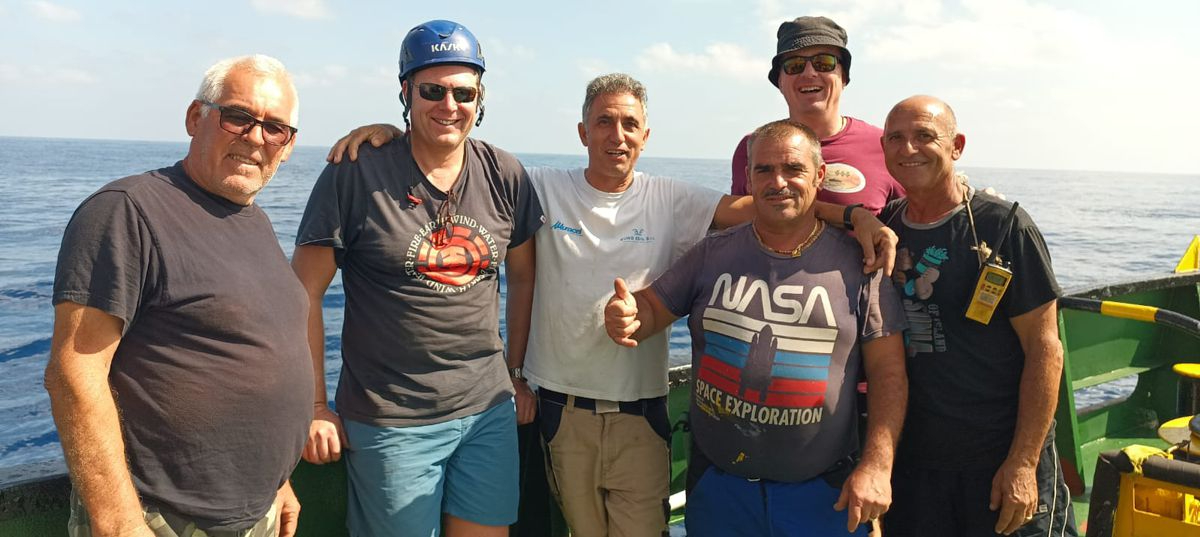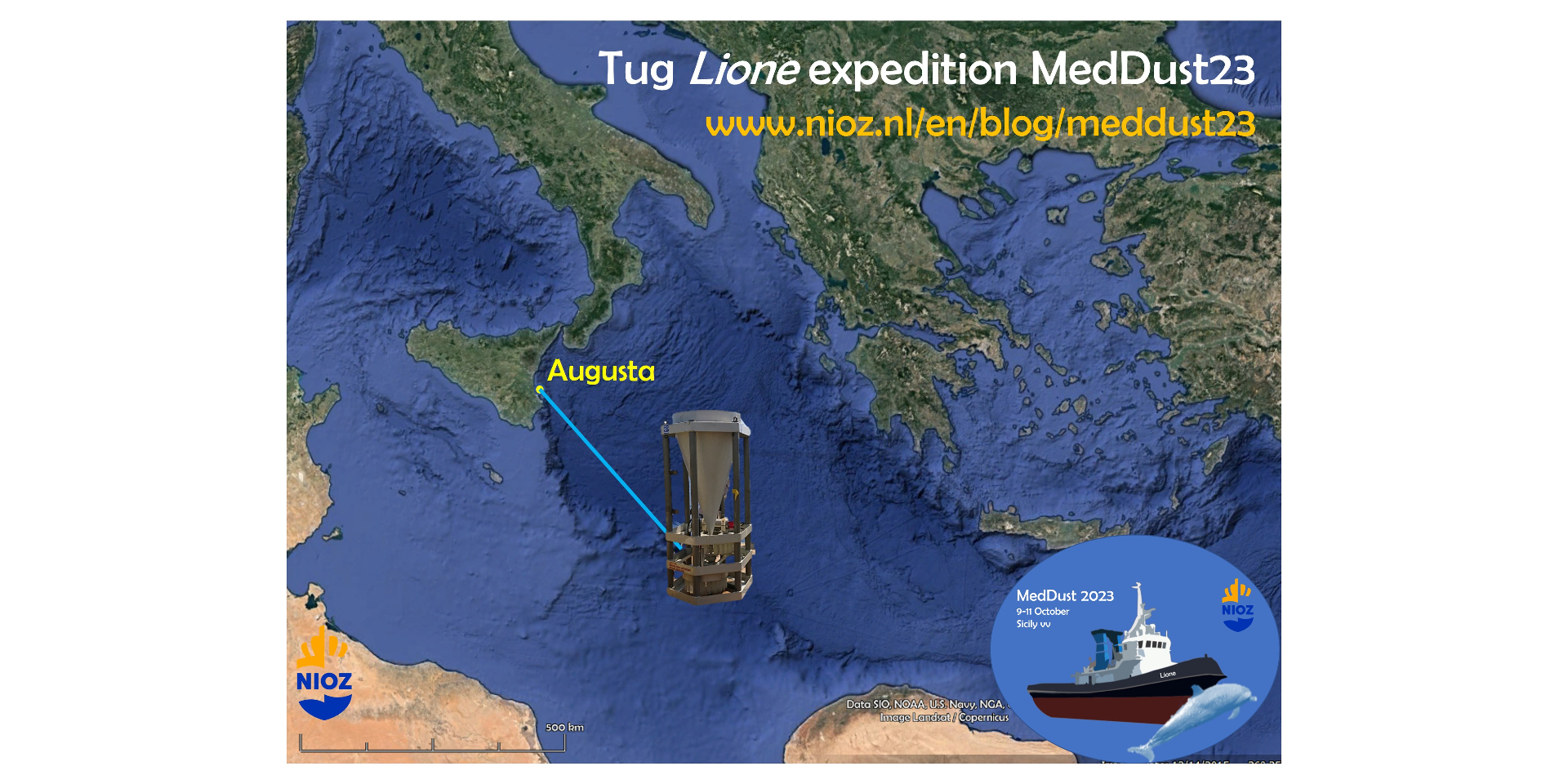
Tug Lione is used to operate in Italian waters mostly, assisting larger vessels with maneuvering inside ports and delivering large fenders to protect ships and quays. In addition, the crew is trained and highly skilled in environment protection, foremost the cleaning up of oil spills. Scientific work is obviously new to the crew and we enjoy explaining what our equipment is for and why we are doing this study. She is not a big vessel but very cosey! We share a cabin with the four of us.
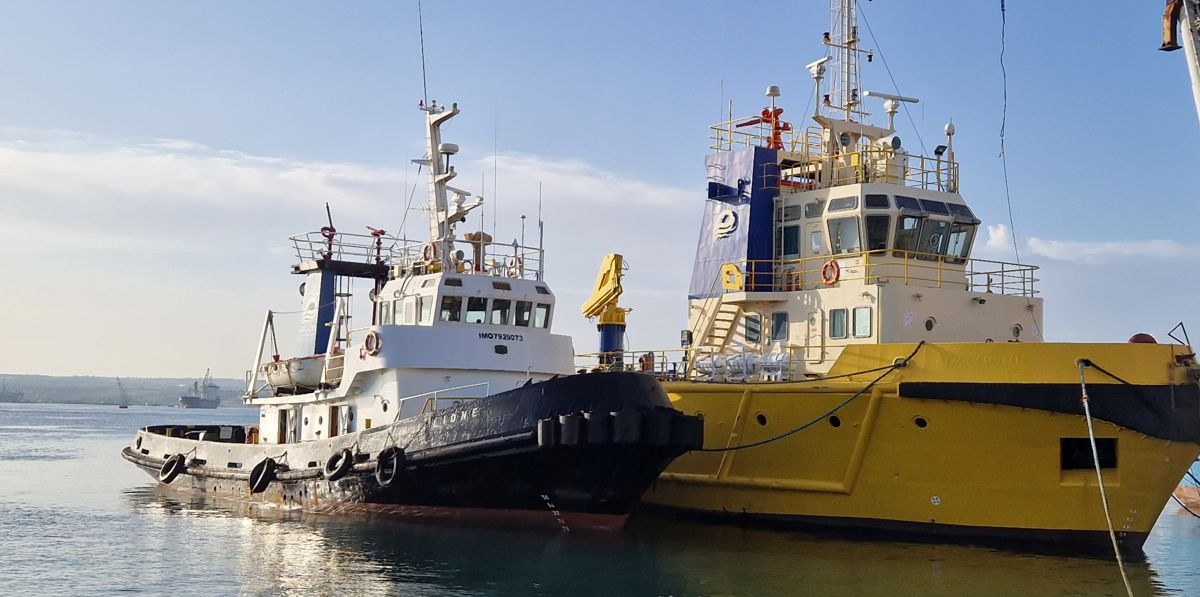
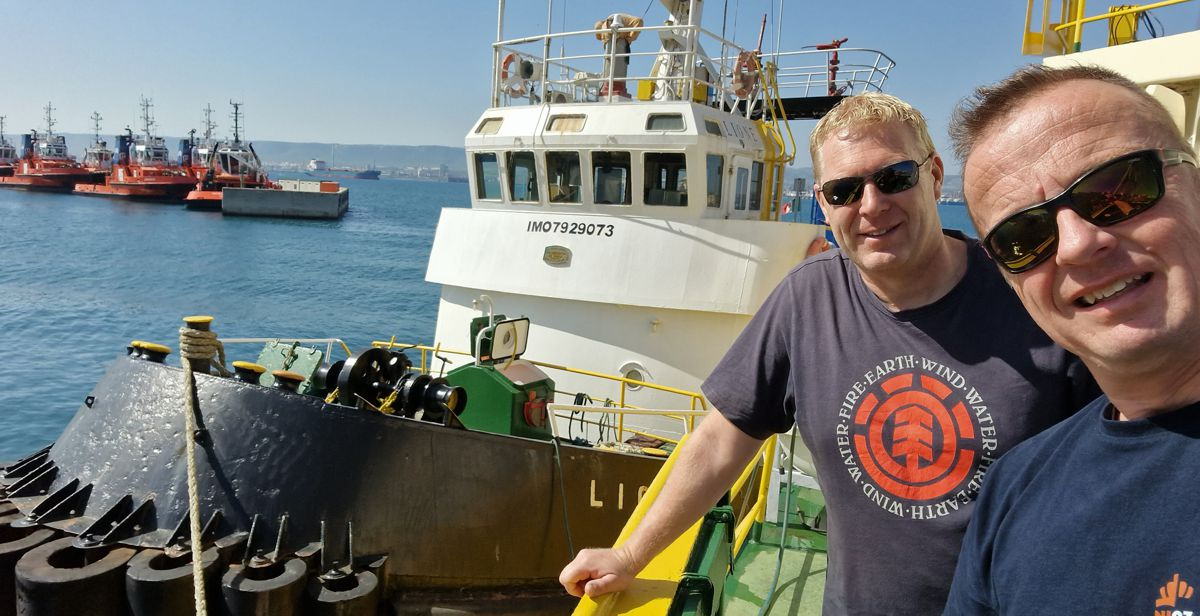
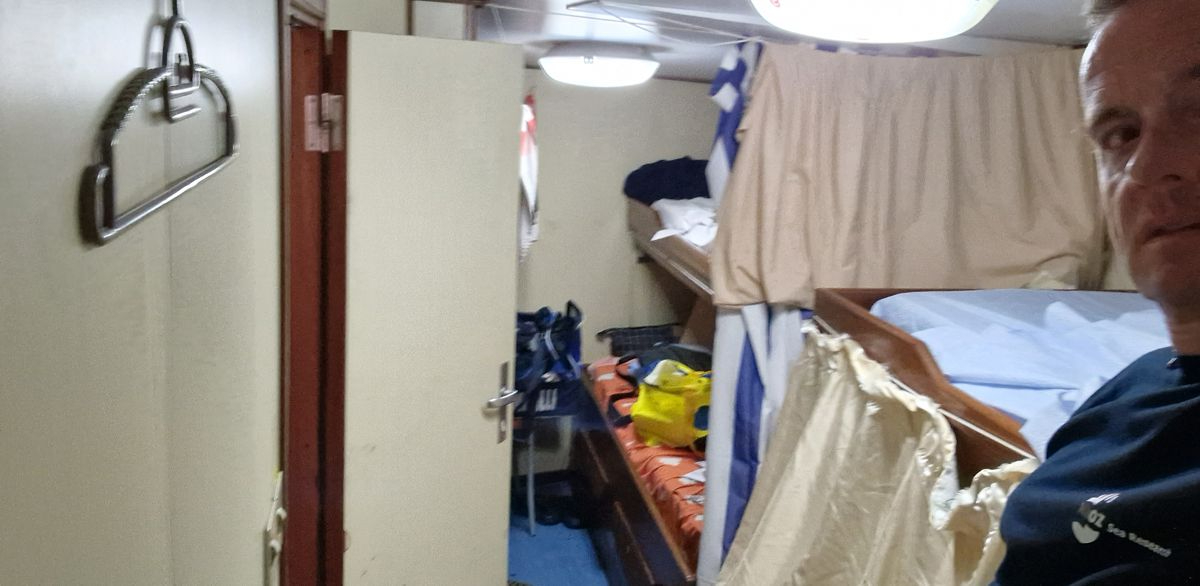
We leave the port of Augusta under nicely calm conditions; the outer wall of the harbour keeps swell and waves out.
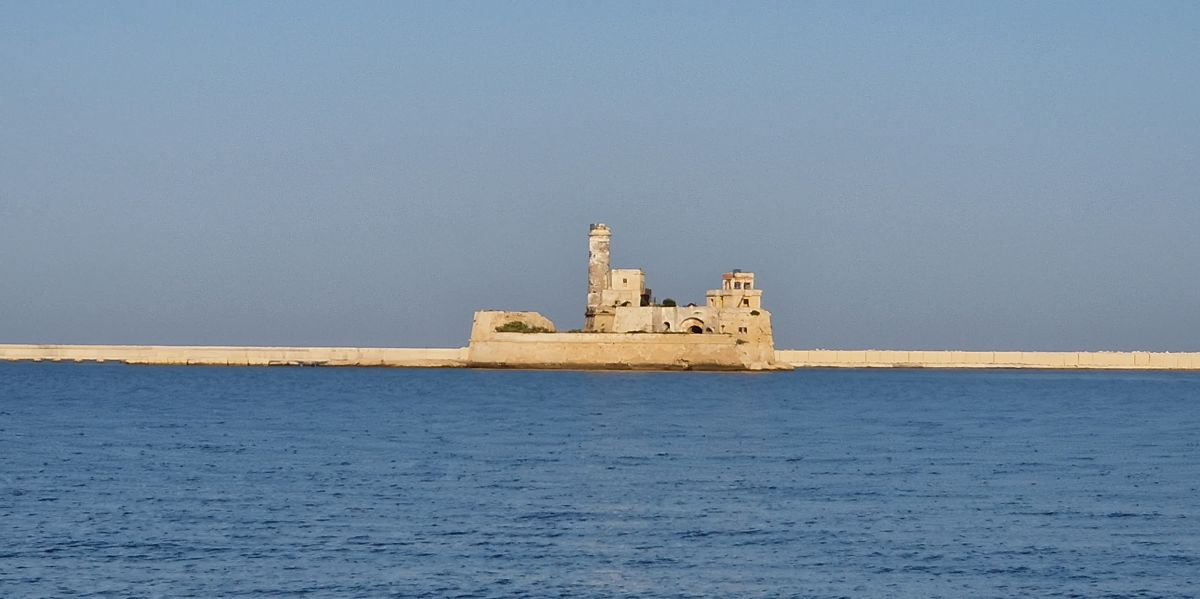
Even outside the harbour wall there is hardly any wind a only a little bit of swell. Only because the vessel is relatively low, the waves still make it onto the deck.
While we sail out of Augusta, we are treated to a very nice and dusty sunset over Sicily.
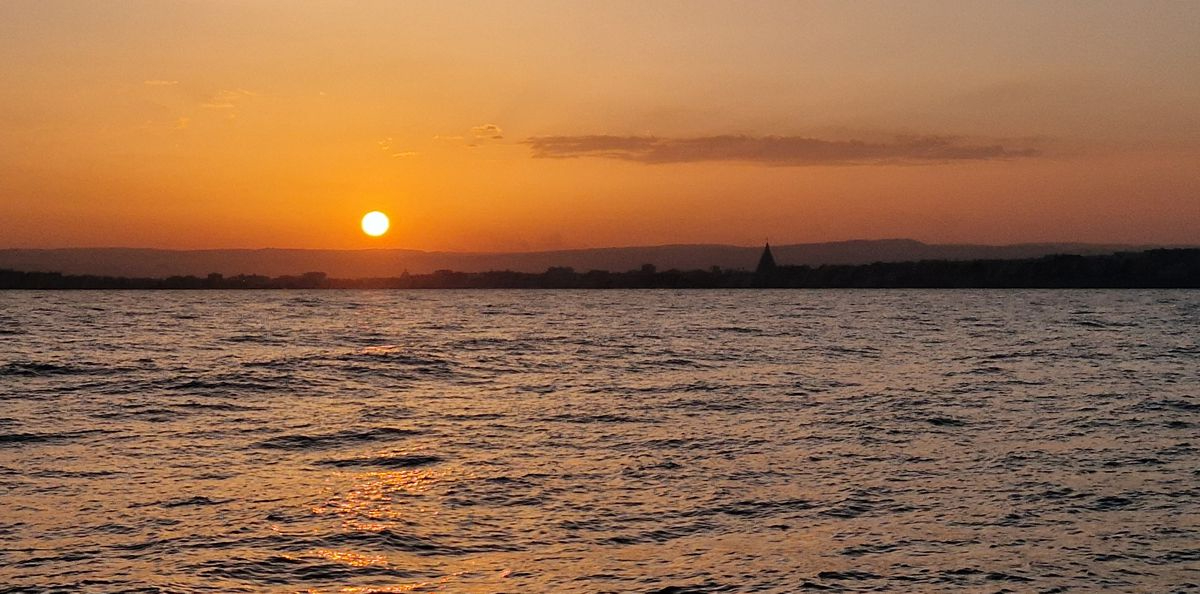
On our way to the trap site in the southeastern corner of the Italian EEZ, between the islands of Sicily (Italy) and Crete (Greece), we prepare for the recovery and re-deployment of the sediment-trap mooring. New bottles have to be prepared with densified and clean seawater and some spare parts of the mooring (like the top triangle frame at the front of this picture) will be replaced, next to being provided with a new satellite beacon.
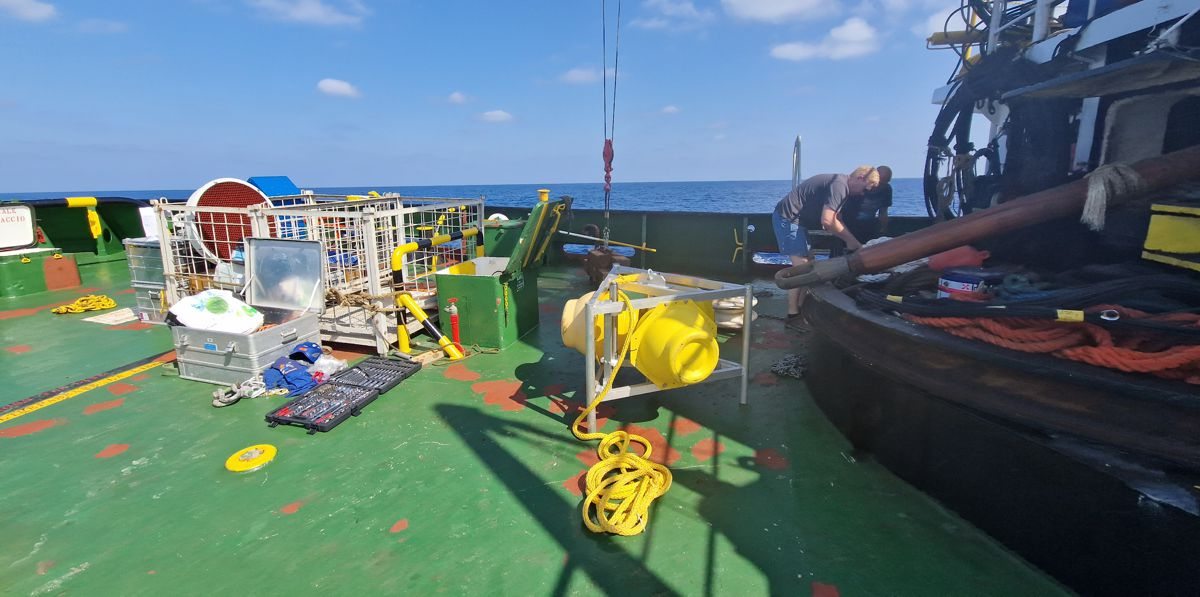
The most exciting part of a mooring recovery is always: will she come up when give the release command? Fortunately, the communication to the releases work very well and soon we see decreasing numbers on the distance display, meaning that the mooring is on her way to the sea surface!
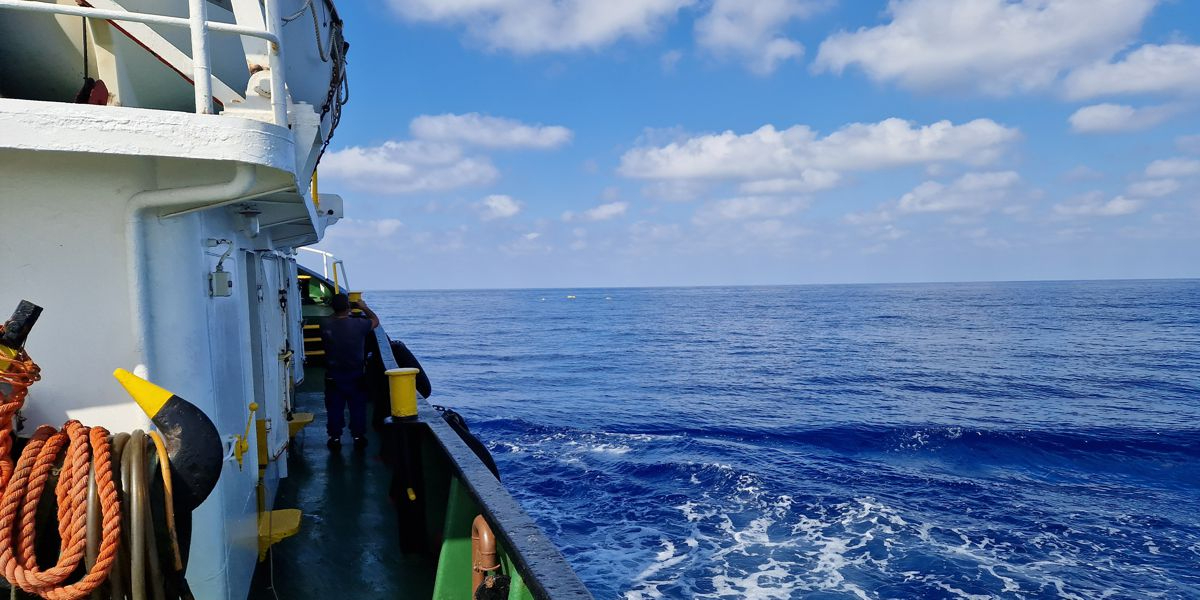
With calm conditions like these, and the excellent maneuvering of the officers on the bridge, the operations run really smoothly! Within half an hour after the release command was given, the mooring surfaced and we could recover her swiftly with the deck crane.
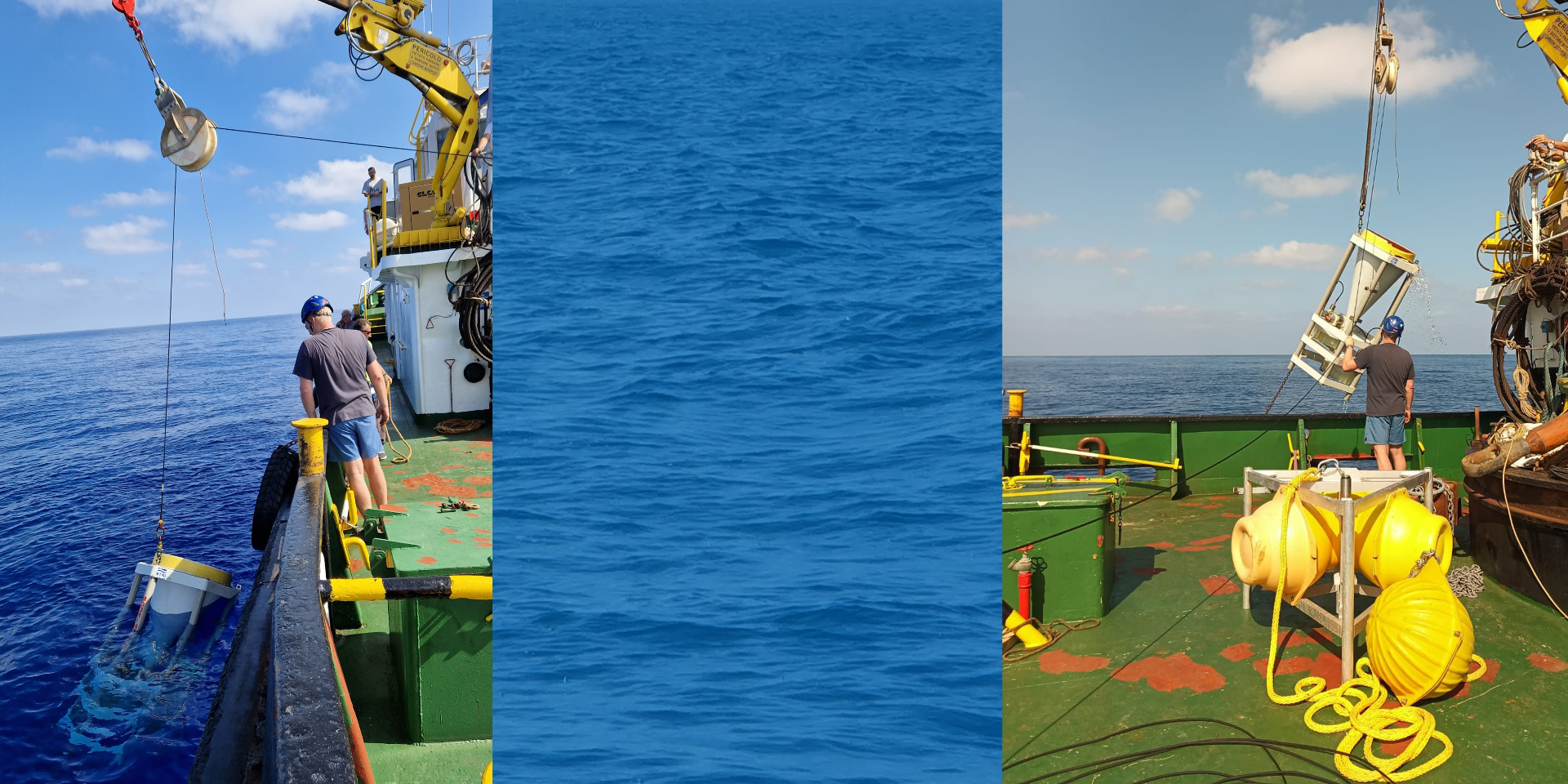
Here you see the lower carrousel of the sediment trap with the bottles containing material. Each bottle has been positioned below the funnel for 10 days, collecting all material (including dust particles, organic matter produced by plankton in the surface waters and fossil remains of phytoplankton) settling towards the seafloor.
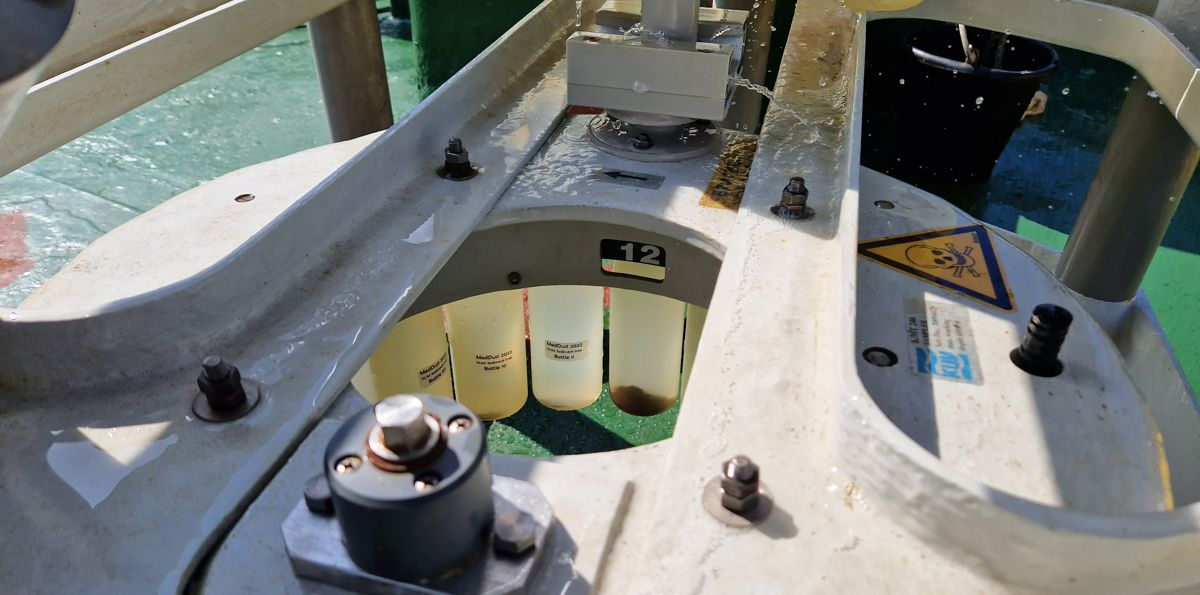
The tug has a pretty impressive winch to spool arm-thick cables that can pull big ships. However, for the dyneema line that we are using for the mooring, and under such a calm sea state, the spooling can be done by hand.
After replacing all the bottles of the sediment trap and all the electronics that steer the carrousels, checking all the moving parts and floats, the mooring is ready to go into the water for another year of sediment collection. The sea state is so amazingly calm that we can deploy her really easily.
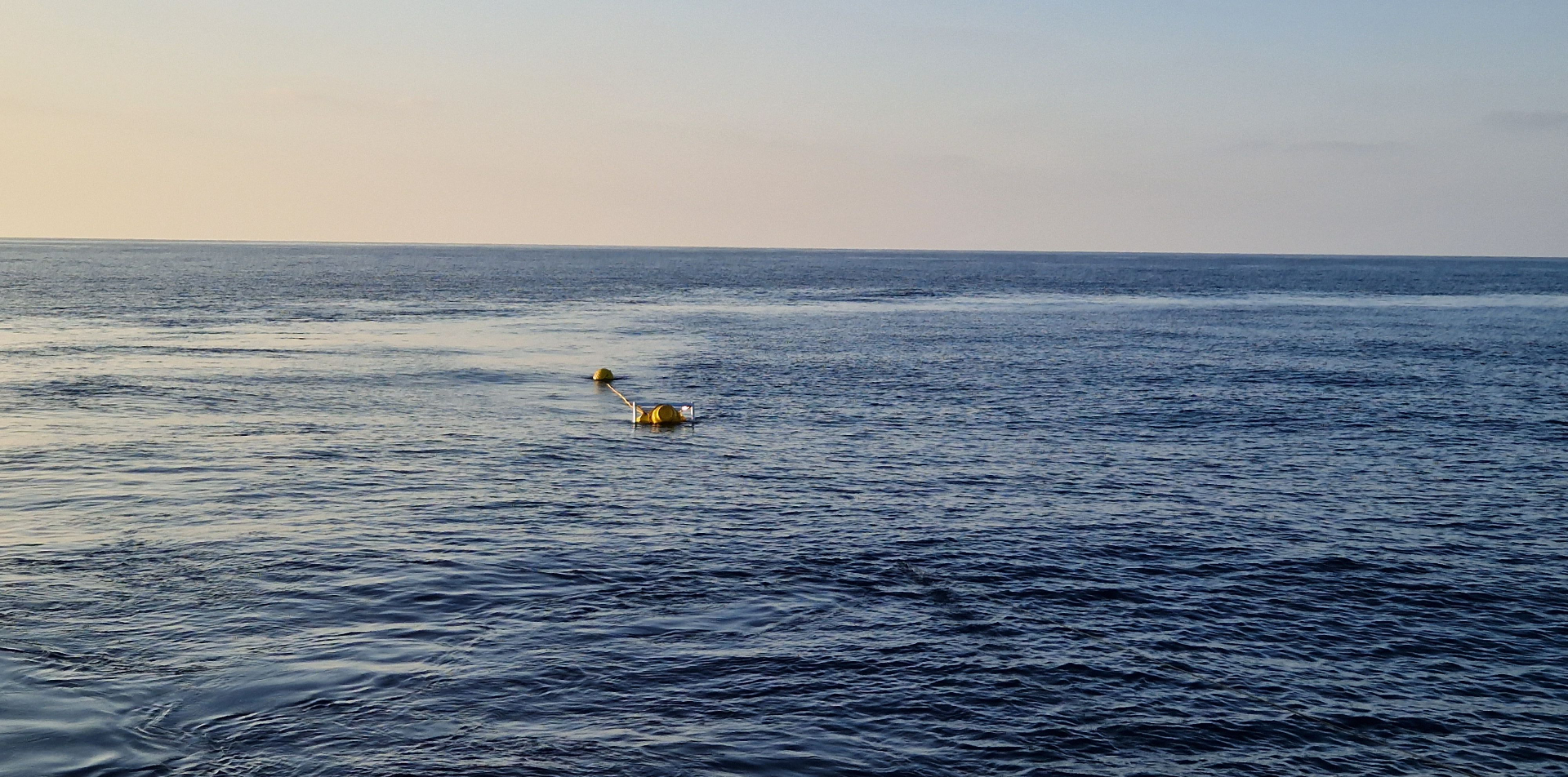
The Lione crew is very helpful and clearly enjoys this scientific mission. Here you see AB’s Pepe, Salvatore, Antonio, and Valentino, chief engineer Hugo and bosun Pepe who took really great care of us: grazie mille!
